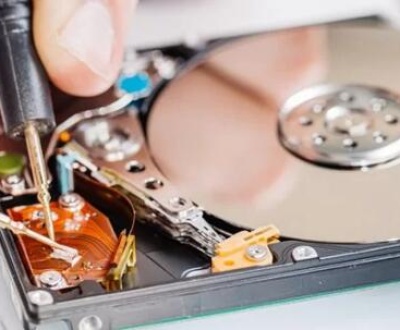Restoring deleted pictures from your computer can be a distressing yet manageable task, especially with the right knowledge and tools. Whether you’ve accidentally deleted cherished family photos, important work images, or a collection of memorable moments, there’s hope for recovery.
1. Data Deletion and Recovery
When you delete a file from your computer, it doesn’t disappear immediately. Instead, it is typically moved to the Recycle Bin (Windows) or Trash (Mac). If you empty the Recycle Bin or Trash, the file isn’t entirely erased from your hard drive; the space it occupied is marked as available for new data. Until that space is overwritten by new information, the deleted file can potentially be recovered.

2. Initial Steps for Recovery
a. Check the Recycle Bin or Trash: The first step is to check your computer’s Recycle Bin or Trash. Simply open it and look for the deleted pictures. If you find them, right-click on the files and select “Restore” to return them to their original location.
b. Use File History or Backup: If you have enabled Windows File History or a similar backup solution on your Mac, you may be able to recover deleted files from these backups. Access your backup settings and look for the deleted pictures to restore them.
3. Using Data Recovery Software
If the pictures are not in the Recycle Bin or backed up, you can use data recovery software. Here’s a step-by-step guide to help you through this process:
a. Choose the Right Software: There are numerous data recovery tools available. Some popular options include:
Recuva: Known for its user-friendly interface and effectiveness.
EaseUS Data Recovery Wizard: Offers a comprehensive recovery solution with various scanning options.
Disk Drill: Provides advanced scanning algorithms and a high recovery rate.
b. Download and Install the Software: Download the chosen data recovery software from a reputable source. Install it on a different drive or partition than the one where the pictures were deleted to avoid overwriting the data.
c. Scan for Deleted Files: Launch the software and initiate a scan of the drive where the pictures were originally stored. The scan may take some time, depending on the drive’s size and the extent of deletion.
d. Preview and Recover Files: Once the scan is complete, the software will display a list of recoverable files. Preview the pictures to ensure they are intact and select the ones you wish to recover. Save them to a different drive to avoid overwriting any remaining data.
4. Professional Data Recovery Services
If software solutions fail or if the hard drive has physical damage, you may need to seek professional data recovery services. These services are more expensive but offer a higher chance of recovery. Look for reputable providers with good reviews and a track record of successful recoveries.
5. Preventative Measures
To avoid future data loss, consider the following preventative measures:
Regular Backups: Regularly back up your pictures and important files to an external drive or cloud storage.
Use Cloud Services: Services like Google Photos, iCloud, or Dropbox can automatically back up your photos and provide easy recovery options.
Enable File History: For Windows users, enabling File History ensures that you have a backup of your files that can be easily restored.
About us and this blog
Panda Assistant is built on the latest data recovery algorithms, ensuring that no file is too damaged, too lost, or too corrupted to be recovered.
Request a free quote
We believe that data recovery shouldn’t be a daunting task. That’s why we’ve designed Panda Assistant to be as easy to use as it is powerful. With a few clicks, you can initiate a scan, preview recoverable files, and restore your data all within a matter of minutes.
Subscribe to our newsletter!
More from our blog
See all postsRecent Posts
- Data recovery salt lake city utah 2025-04-18
- Data recovery sacramento 2025-04-18
- Data recovery miami 2025-04-18

 Try lt Free
Try lt Free Recovery success rate of up to
Recovery success rate of up to









